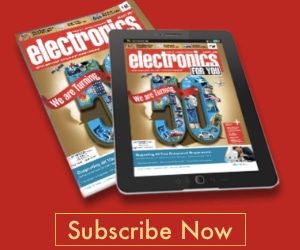Through the pandemic, the Web of Issues (IoT), which is described as “software program, sensors and community connectivity embedded in bodily units, buildings and different objects that allow these objects to gather and change information and ship, obtain, and execute instructions,” grew rapidly.
Presently, there are 21.5 billion linked units on the planet. In line with the World Financial institution’s Findex 2021 survey, 1.4 billion individuals nonetheless lack entry to banking, with ladies making up the bulk. Moreover, 850 million people worldwide lack any type of ID, not to mention a digital one. This provides the prospect to skip forward to a digital ID and use the IoT to conduct transactions, which might improve entry to monetary providers and promote financial empowerment.
As an illustration, a brand new digital financial institution ID that meets shopper due diligence necessities for monetary establishments using a particular biometric identification has been piloted in Papua New Guinea. A complete of two,548 individuals had been contacted by the initiative, 47% of them had been ladies from rural areas who had beforehand been unable to create a checking account. 80% of the unofficial and rural inhabitants profit from this.
The brand new ID not solely makes it doable for biometric identification, which facilitates entry to banking, however it additionally will increase safety and makes it doable to assemble info on client behaviour. The place there was beforehand no information, spending patterns can be utilized to find out creditworthiness, enhancing danger assessments and enabling tailor-made monetary providers.
Whereas the variety of web customers and cell connections in Papua New Guinea is rising, IoT-enabled devices are additionally gaining popularity, and sensible card readers and point-of-sale terminals are actually being made obtainable. Utilizing communication applied sciences like Bluetooth, Close to Subject Communication, and Wi-Fi, funds may be accomplished safely and successfully. These applied sciences facilitate communication between wearables, contactless playing cards, and point-of-sale terminals.
Utilizing communication applied sciences like Bluetooth, Close to Subject Communication, and Wi-Fi, funds may be accomplished safely and successfully. These applied sciences facilitate communication between wearables, contactless playing cards, and point-of-sale terminals.
Clients can unfold out their funds for home items like photo voltaic panels, smartphones, fridges, and televisions utilizing M-KOPA, as an example. The system’s buy worth is paid in modest installments over time after an preliminary deposit, up till the entire quantity is paid. As soon as the merchandise has been totally paid for, the info on payback charges may be utilised to resecure the asset as collateral, permitting customers to entry money loans via M-KOPA. MiBank approaches the asset’s resale in a comparable method.
IoT units gather information on crop yields, soil situations, and climate patterns within the agricultural sector, permitting monetary establishments to supply farmers specialised monetary providers and help them in making well-informed monetary selections, comparable to having access to credit score and insurance coverage.
As expertise advances, we’ll most likely see much more inventive use of the IoT to boost monetary providers and empower folks and companies around the globe. Nonetheless, addressing infrastructure, capability, standardization, and regulatory frameworks would require a complete technique. The emergence of the Web of Issues has the potential to change monetary providers and open up new doorways for financial growth and monetary inclusion. The South Asia Division’s adviser on the ADB is Lotte Schou-Zibell. Senior public administration knowledgeable Arndt Husar (digital transformation).
– Commercial –





